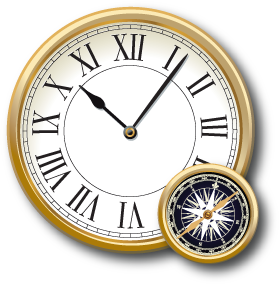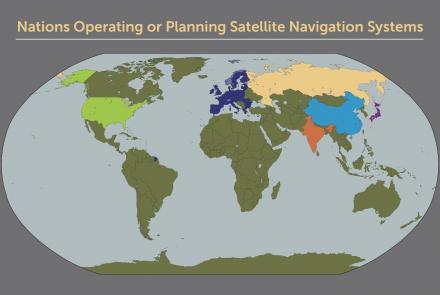As in the past, nations with global ambitions continue to seek global navigation capabilities.
The GPS system operated by the United States is not the only satellite navigation system. In the 1990s and 2000s, many nations began developing or improving their own systems.
Who's in Charge of Satellite Navigation Systems?
Different nations develop and deploy independent navigation capabilities. Multiple constellations of satellites can improve positioning, navigation, and timing for everyone. Planning is required so systems do not interfere with each other.
International Systems
GPS—Operated by the U.S. Department of Defense and coordinated with the U.S. Department of Transportation and other civilian government agencies.
GLONASS—Initially developed by the Soviet Union during the Cold War and now operated as a global system by Russia’s Federal Space Agency.
Galileo—Under development as a civilian-operated global system by a consortium of European nations. Operations are coordinated by an agency under the auspices of the European Commission.
Beidou—The Beidou Navigation Satellite System (BDS) was planned and developed by the government of China. Global coverage with about 35 satellites was planned for 2020.
IRNSS—The Indian Space Research Organisation (ISRO) began developing the Indian Regional Navigational Satellite System (IRNSS) in 2006 to provide positioning services around India.
QZSS—The Japanese government planned to develop the Quasi-Zenith Satellite System (QZSS) to provide data links and positioning services for Japan.





